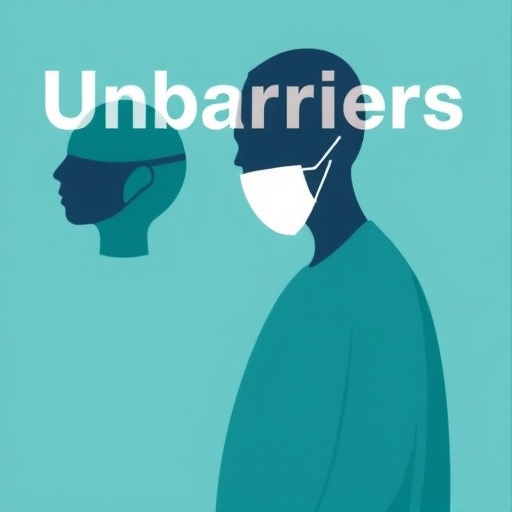In the evolving landscape of European healthcare, an insidious and often overlooked challenge persists: racism. While Europe’s health systems are lauded for their accessibility and quality, the shadows cast by racial discrimination continue to affect patient outcomes and healthcare equity. Recent research by Filali, Osei, and Vignier, published in the International Journal of Equity in Health, unveils the complex nature of these unseen barriers, urging policymakers, practitioners, and society at large to confront systemic racism embedded within European healthcare institutions.
The concept of racism in healthcare is multifaceted, extending beyond explicit acts of prejudice to include structural and institutional biases that silently undermine the quality of care extended to minority ethnic groups. These barriers are often intangible and difficult to quantify but have tangible impacts on health disparities. Patients from racialized communities frequently report poorer experiences, lower trust in medical providers, and reduced access to necessary interventions, which collectively exacerbates health inequalities.
Filali and colleagues’ work delves into the mechanisms by which racism persists despite formal commitments to equity and nondiscrimination. One key insight lies in the recognition of implicit bias among healthcare providers. Unlike overt racism, implicit biases operate unconsciously, influencing clinical decisions, communication patterns, and even diagnostic accuracy. For instance, studies indicate that pain assessments for minority patients are often undervalued, leading to inadequate pain management and poorer clinical outcomes.
Moreover, systemic policies and administrative protocols inadvertently perpetuate exclusion. Language barriers, cultural insensitivity, and a lack of diversity in healthcare leadership contribute to environments where minority patients feel alienated or misunderstood. These systemic flaws result not just in individual negative encounters but in the broader disenfranchisement of entire communities, undermining public health goals and social cohesion.
The research further highlights how socioeconomic determinants intersect with racial biases to compound health disparities. Poverty, housing instability, and limited educational opportunities disproportionately affect racialized groups, creating a confluence of adverse factors that impede access to care and influence disease prevalence. Healthcare providers often lack sufficient training or resources to address these social determinants effectively, thereby unintentionally reinforcing cycles of disadvantage.
Importantly, Filali et al. propose a comprehensive framework for addressing racism within European healthcare systems. This includes enhancing cultural competency training for healthcare professionals, implementing standardized protocols to identify and mitigate implicit biases, and promoting diversity at all organizational levels. Crucially, the framework advocates for community engagement and the inclusion of minority voices in policy development, ensuring that interventions are grounded in lived experiences.
An essential technical aspect discussed pertains to data collection and analysis methodology. The researchers emphasize the necessity of disaggregated health data by race and ethnicity to detect disparities with precision. In many European countries, such data are either not systematically collected or are limited due to privacy concerns and political sensitivities around racial categorization. Filali and colleagues argue that without rigorous data infrastructure, efforts to monitor progress and hold institutions accountable remain hampered.
The ethical implications of such data collection practices are acknowledged, underscoring the need for stringent protections to prevent misuse and stigmatization. Transparent communication with communities about the purposes and benefits of collecting racial health data is paramount. This transparency fosters trust and underscores the commitment to equity rather than surveillance or exclusion.
Another critical element involves psychological safety within healthcare teams. The study notes that addressing racism requires that healthcare workers themselves feel safe discussing these issues without fear of reprisal or marginalization. Creating supportive environments leads to more open dialogues about biases and systemic limitations, paving the way for meaningful change from within institutions.
Additionally, technological advancements present opportunities to mitigate some barriers, albeit cautiously. For example, AI-driven diagnostic tools and decision support systems can potentially reduce human biases if designed with equity principles at their core. However, if training data or algorithms reflect existing societal prejudices, these technologies risk perpetuating or exacerbating inequalities. The authors call for rigorous oversight and inclusive development processes for medical AI applications.
This research also documents case studies from various European countries, illustrating how localized initiatives have successfully challenged racist practices and improved care outcomes. These examples offer valuable blueprints for scaling interventions while respecting different social and political contexts across the continent. They demonstrate the power of grassroots movements and allied healthcare leadership in catalyzing systemic reform.
The socioeconomic and political landscape of Europe adds layers of complexity to confronting racism in healthcare. Migration patterns, rising nationalism, and divergent integration policies impact the experiences of racialized populations and shape public attitudes toward equity initiatives. The authors stress that health equity cannot be disentangled from broader social justice efforts, requiring multisectoral collaboration and sustained political will.
Ultimately, the urgency of addressing racism within European healthcare transcends moral imperatives; it is a public health necessity. Reducing disparities enhances population health, optimizes resource allocation, and strengthens social trust in institutions vital during crises such as pandemics. Filali, Osei, and Vignier’s work contributes critical knowledge and practical strategies to drive this transformation.
As the healthcare community navigates the next decade, integrating equity-centered approaches informed by rigorous research will be crucial to dismantling unseen barriers. This study’s findings resonate with global calls for justice and inclusivity in medical care, offering hope that Europe can lead by example through thoughtful policies and committed action against racism.
In summary, confronting racism in European healthcare requires a holistic strategy that acknowledges the interplay of individual bias, institutional structures, and societal factors. Technical solutions, ethical considerations, and robust community participation form pillars of this endeavor. The research by Filali and colleagues equips stakeholders with vital insights and a roadmap to achieve a more equitable healthcare future for all Europeans, regardless of their racial background.
Subject of Research: Racism and health inequities in European healthcare systems.
Article Title: Unseen barriers: addressing racism in European healthcare.
Article References:
Filali, A., Osei, L. & Vignier, N. Unseen barriers: addressing racism in European healthcare.
Int J Equity Health 24, 153 (2025). https://doi.org/10.1186/s12939-025-02534-y
Image Credits: AI Generated




